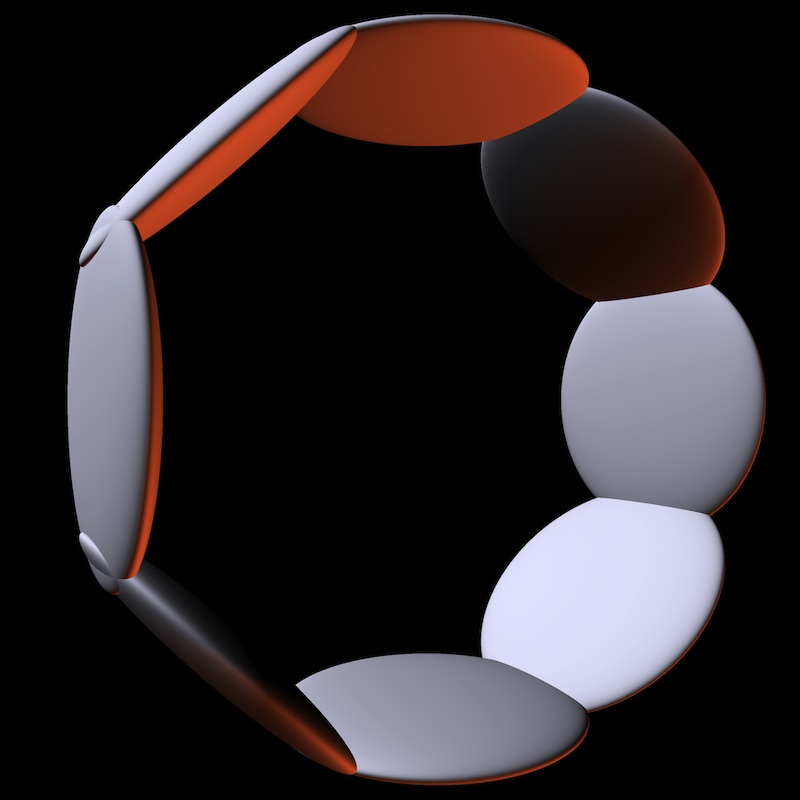A simple technique for computing the axis-aligned bounding box of an ellipsoid
Here is a simple technique for computing the tight axis-aligned bounding box (AABB) of an ellipsoid at any orientation. The technique assumes that the ellipsoid is modeled by transforming a zero-centered unit-radius sphere using an affine transformation, of which we know the corresponding matrix \(M\). This is often the case in a ray-tracing application. Here, the translation is not important so for simplicity we assume that \(M\) is a \(3\times3\) matrix. tl/dr: see the last paragraph.--
Samuel Hornus, February 7, 2013.
Samuel Hornus, February 7, 2013.
Transforming normals
As is well known (and proving it is an easy exercice), when transforming an object affinely using matrix \(M\), the normals should be transformed using the cofactor matrix of \(M\) which is proportional to the transpose of the inverse of \(M\). (Don't forget to re-normalize your normal, if needed, after it's been transformed.)The AABB of an ellipsoid
Let \(E\) be our ellipsoid. Since \(E\) is convex and smooth, there is a bijection between the direction of the normal and the points on the surface of \(E\). The bijection is not trivial for the ellipsoid, but it is trivial for the unit sphere from which \(E\) is modeled. So we'll go through that space. In order to find the point \(q\) of \(E\) which is extremal along some direction \(v\), we first transform \(v\), which is the normal to \(E\) at \(q\), to the unit sphere space, i.e., we compute \(n=M^{T}v\) where the superscript \({}^{T}\) denotes the transpose. This gives us the normal in the local coordinate system. We then normalize \(n\) to find the point \(p=\frac{n}{||n||}\) of the unit sphere whose normal has direction \(n\). (\(||\cdot||\) is the \(\ell_2\) norm.) Then we transform \(p\) back to the ellipsoid space: \(q=Mp\) is the point on the ellipsoid with normal \(v\). In particular, the top-most point of ellipsoid \(E\) (that with largest z-coordinate) is \(q=M\frac{M^T v}{||M^T v||}\) with \(v=(0,0,1)^T\).Repeat for the x- and y- direction, then by symmetry and using the center of \(E\), you have found the 6 intersection points of \(E\) with its tight axis-aligned bounding box. Note that all three operations (along x-, y- and z-axes) can be done together using a matrix-matrix multiplication: simply compute the product \(MM'\) where \(M'\) is \(M^T\) with its columns independently normalized.
Optimization
The above computes the extremal points of \(E\) in the canonical axes directions. But the bounding box just needs the z-coordinate of the extremal point along the z-axis, and similarly for the x- and y-axes. That is, we only need the diagonal elements of \(MM'\), which are simply the \(\ell_2\) norms of each row of \(M\):Let \(c\) be the center of \(E\) and \(r_i\) the \(i\)-th row of \(M\). Then the lexicographically smallest point of the bounding box of \(E\) is \(\text{lo}=c-\Delta.\) Its lexicographically largest point is \(\text{hi}=c+\Delta\) where \(\Delta=(||r_0||,||r_1||,||r_2||)^T.\)
